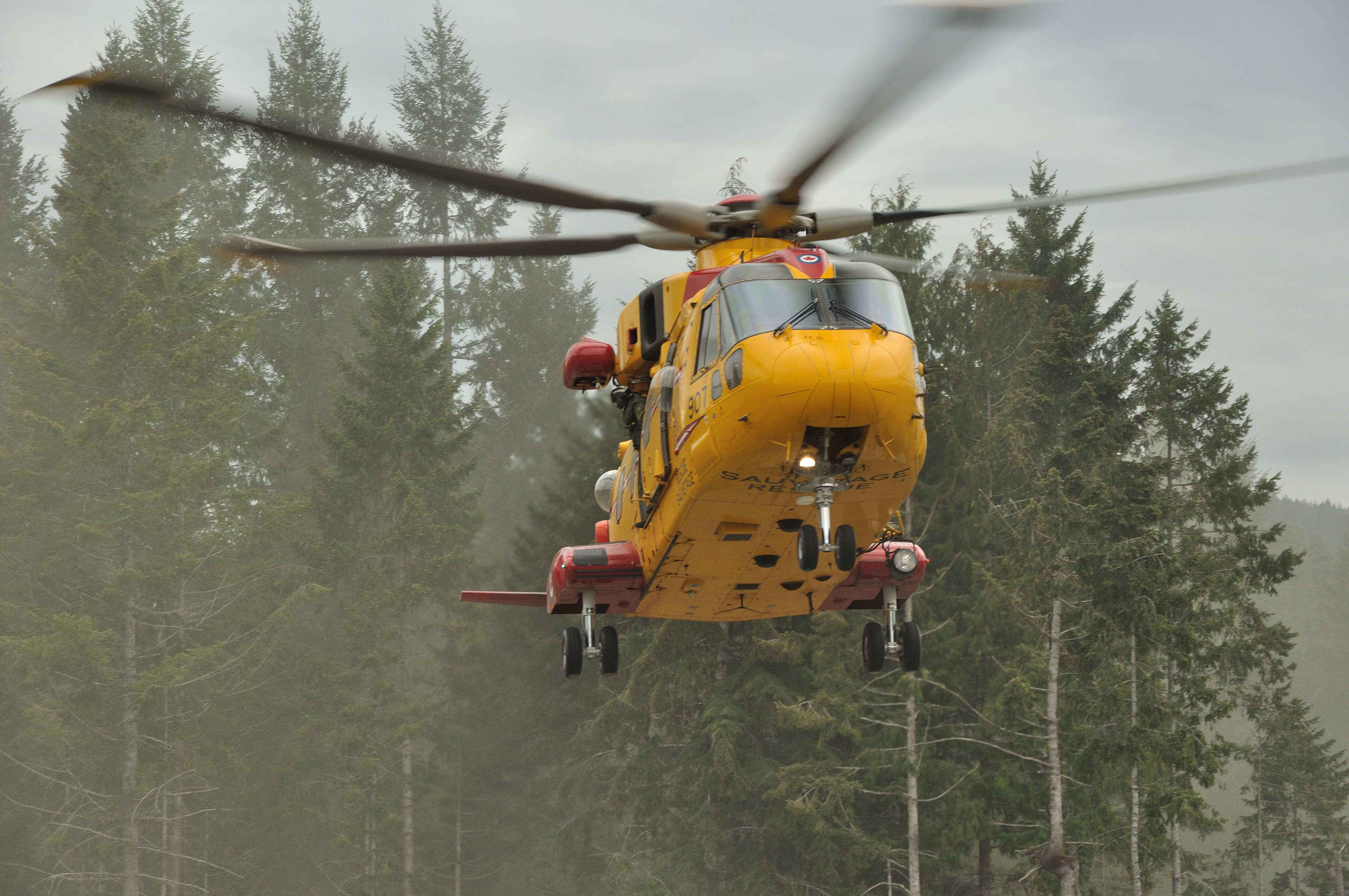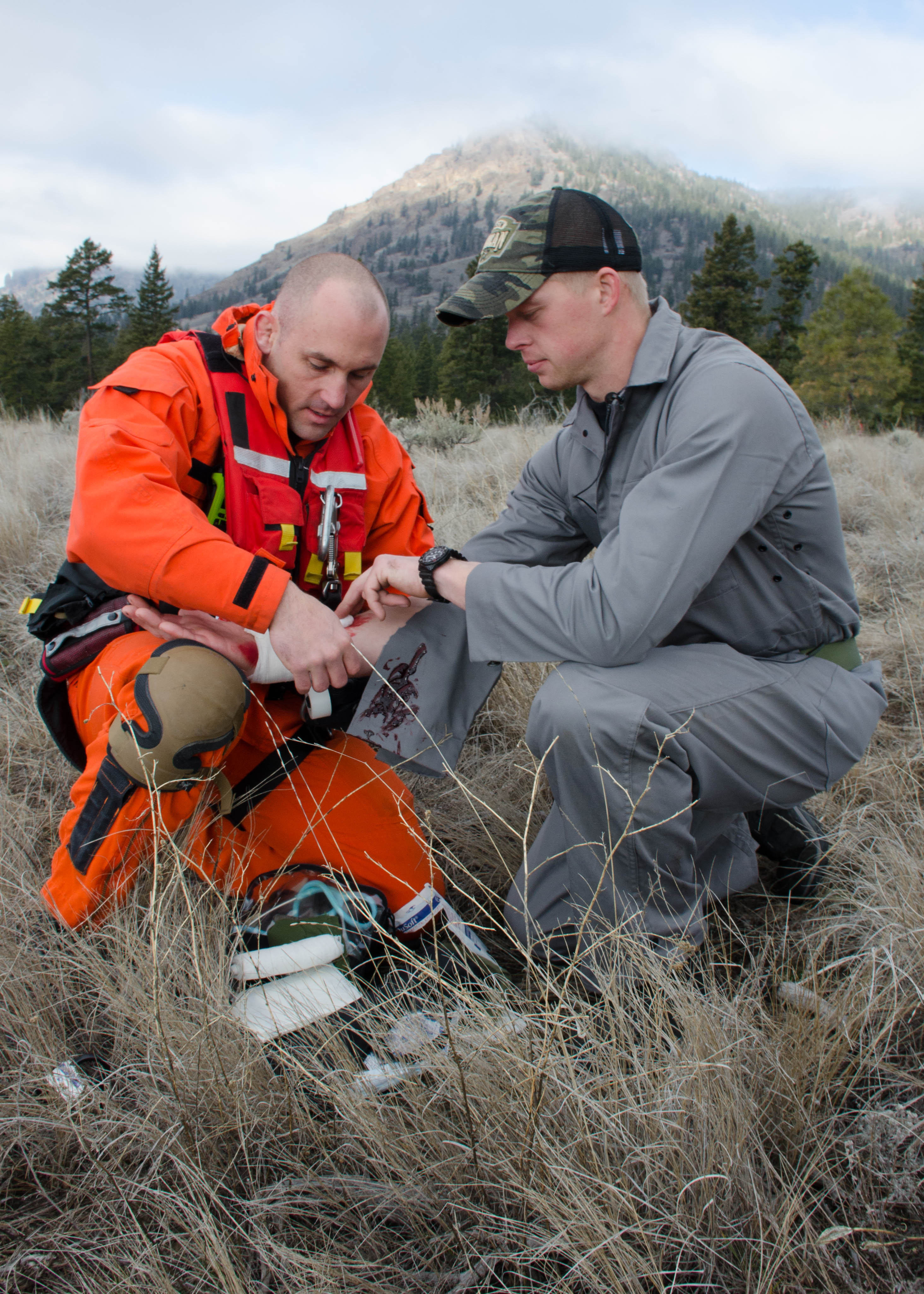Day and night, every day of the year, personnel at 442 Transport and Rescue Squadron stand ready to respond to calls for search and rescue (SAR).
It’s a diverse team of pilots, SAR Techs, planners, military and civilian aircraft maintainers and support staff whose professionalism is readily apparent to the casual observer. Each member of the squadron plays a critical role in the never-ending state of high-readiness, which by necessity includes training to maintain competencies and acquire new skills.
The primary role of 442 Transport and Rescue Squadron, based at CFB Comox, is the provision of aviation resources in support of the Joint Rescue Coordination Center (JRCC) Victoria.
The territory they cover is vast. The squadron is responsible for a SAR zone stretching from the BC – Washington border to the Arctic, and from the Rocky Mountains to 1,200 km out over the Pacific Ocean. It consists of approximately 920,000 square kilometers of mainly mountainous terrain of Yukon and British Columbia and 560,000 square kilometers of the Pacific Ocean extending to approximately 600 nautical miles offshore, including over 27,000 kilometers of rugged British Columbia coastline. The rugged and often inaccessible terrain, severe weather, and large expanses of sparsely populated areas make the Victoria Search and Rescue Region (SRR) the most demanding region in the country.
While approximately 80 of the Squadron’s personnel strength of 200 are aircrew trades, including pilots, navigators, flight engineers, and Search and Rescue Technicians (SAR Techs), the majority are maintenance personnel, charged with keeping the fleet of 11 aircraft at peak operational readiness.
On occasions when major search operations dictate the establishment of a forward operating base somewhere else in the province, 442’s maintenance personnel will deploy with the aircrew, providing servicing and repairs to aircraft on site
The Canadian Armed Forces have approximately 140 search and rescue technicians (SAR Techs). They are highly trained specialists who provide advanced pre-hospital medical care and rescue for aviators, mariners and others in distress in remote or hard-to-reach areas. These men and women are trained to a primary-care paramedic national standard with additional advanced skills.
SAR Techs are land and sea survival experts who specialize in rescue techniques, including Arctic rescue, parachuting, diving, mountain climbing and helicopter rescue.
The Squadron’s annual SAREX is a major event that had about 60 members of the squadron away from Comox for a week of intense training and flying. Locations vary from year to year to give members of the squadron experience operating in new and different terrain; it also allows the squadron to train with SAR organizations throughout the Victoria Search and Rescue Region, strengthening an impressive network of trained volunteers who also stand by ready to respond.
This year’s SAREX was held in Kamloops and the surrounding area from 22-26 February. Capt Francois Fasquelle led a small team of planners in delivering a week of realistic training scenarios which included rescuing hunters following a helicopter crash, a night para-drop, survival training, and a major air disaster event.
Meanwhile, the work they do is aided by two primary aircraft: the CC-115 Buffalo and CH-149 Cormorant helicopter.
CC-115 Buffalo – One of Canada’s primary search and rescue (SAR) aircrafts, the CC-115 Buffalo will fly in almost any weather. The agile Buffalo can take off and land on even the most rugged terrain and in areas as short as a soccer field.
The CC-130 Hercules now performs many of Eastern Canada’s SAR operations, but the short takeoff and landing (STOL) capabilities of the CC-115 have kept it in use in the Rocky and Coastal Mountain ranges. At 24 metres long, the Buffalo is small enough to service the rough and mountainous terrain on Canada’s West Coast.
All six Canadian Forces’ CC-115s are employed by 442 Transport and Rescue Squadron out of Comox, BC. With a maximum load of 2,727 kg — or 41 fully equipped soldiers — the Buffalo has an operational range of 2,240 km.
CH-149 Cormorant – The Royal Canadian Air Force’s (RCAF) only dedicated search and rescue (SAR) helicopter, the rugged CH-149 Cormorant can operate in even the most severe conditions, making it ideal for Canada’s challenging geography and climate.
Whether coming to the aid of a ship’s crew, an injured mountain climber or a lost hiker, the Cormorant gets the job done.
Powered by three engines, the CH-149 Cormorant has exceptional long-range capability — it can fly for over 1000 km without refueling. With its ample cargo space and rear-ramp access, the helicopter can carry up to 12 stretchers or a load of 5,000 kg.
Because of its shaped rotor blades —strengthened by titanium strips along the leading edge — the CH-149 has superior lift and flight speed, and significantly less vibration than many other helicopters. This advanced system allows the Cormorant to start and stop rotors in very windy conditions — over 50 knots —and also helps provide a stable hover for critical hoisting operations.
Equipped with a full ice protection system, the Cormorant routinely conducts rescues that would have been impossible for its predecessor, the CH-113 Labrador.

